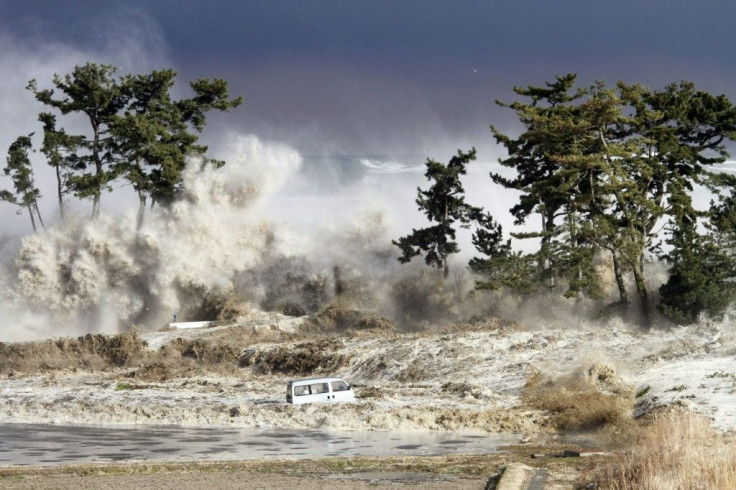World Tsunami Awareness Day: Significance, Facts About The Natural Event
Tsunamis can be devastating and even deadly. On World Tsunami Awareness Day, observed every Nov. 5, authorities are calling on efforts to raise awareness about these natural events and early warning systems that can save lives.
World Tsunami Awareness Day was created in December 2015 by the United Nations General Assembly. However, it was actually the "brainchild" of Japan, as it had built up expertise on matters like early tsunami warnings and rebuilding after a disaster because of its "repeated, bitter experience" over the years, according to the United Nations (UN).
Raising awareness about such events is essential so they won't have to turn into disasters and to make sure early warning systems "cover every at-risk person" so that they can "act quickly" should the need arise. Unfortunately, only about half of the world is actually covered by early warning systems, as per the United Nations Office for Disaster Risk Reduction (UNDRR).
On #TsunamiDay, our Executive Secretary Vladimir Ryabinin and Laura Kong, Director of the IOC International Tsunami Information Center, highlight the importance of #science to protect lives&get every at-risk community #tsunami ready. Info:https://t.co/DgN0Zz7mWi #OnlyTogether pic.twitter.com/1rLe90OAVC
— IOC-UNESCO (@IocUnesco) November 5, 2021
With the new initiative dubbed #GetToHighGround, the agency is stressing the importance of engaging citizens in tsunami awareness, ensuring that the actions in place are tailored "to the local context."
For instance, regular tsunami drills could help people know what to do and where to go in case a tsunami warning is issued. Fun runs through the tsunami evacuation routes may also help people become more familiar with them.
"Tsunamis can be deadly, but they needn't be," the UN noted.
💬 No one should be left behind when a tsunami strikes, @HeadUNDRR
— UNDRR Asia-Pacific (@UNDRR_AsiaPac) October 26, 2022
Join us to commemorate #TsunamiDay with @UNESCAP, @UNESCO, @UNDPasiapac & more!
🗓️ 4 November 2022
⏰ 9:00 am - 10:00 am, Bangkok
🔗 https://t.co/Z7k9BlO5Xn#GetToHighGround pic.twitter.com/AacVhR3e16
"In the face of devastation, early warning and early action remain the most effective way of protecting people from tsunamis," the special representative of the Secretary-General for Disaster Risk Reduction, Mami Mizutori, said, according to the UNDRR.
This World Tsunami Awareness Day, let's learn more about tsunamis by looking at some tsunami facts. (Courtesy: the UN, National Geographic, the International Tsunami Information Center and DoSomething.org)
- Although they are rare, tsunamis are among the "deadliest and costliest" hazards, accounting for nearly 10% of economic losses from disasters in the last two decades.
- While tsunamis tend to be visualized as a massive wall of water, they are usually more like a "rapidly rising tide." Moreover, they don't usually come as one massive wave but in a series of waves.
- Tsunamis can travel at speeds of 500 miles per hour. That's about as fast as a jet airplane. At these speeds, they can cross the Pacific Ocean in just less than a day.
- Tsunamis can be caused by earthquakes, landslides, volcanic eruptions or even extraterrestrial collisions, such as an asteroid strike.
- Some 80% of tsunamis happen within the Pacific Ring of Fire.
- In the U.S., the states most at risk for tsunamis are Alaska, California, Hawaii, Oregon and Washington.
- Scientists can estimate the time when a tsunami will arrive. Early warning systems allow people to go to higher ground even before the tsunami arrives.
- Retreating sea water is an important sign of a tsunami.
- In the last 100 years, 58 tsunamis have claimed 260,000 lives. This, according to the UN, surpasses other natural hazards.
- One of the biggest tsunami events in history took place on Aug. 26, 1883. After the eruption of the Krakatoa (Krakatau) volcano in Indonesia, the resulting waves reached 135 feet, killing more than 36,000 people.
- There are no tsunami seasons. Such events can happen "any time and anywhere."

© Copyright IBTimes 2024. All rights reserved.






















